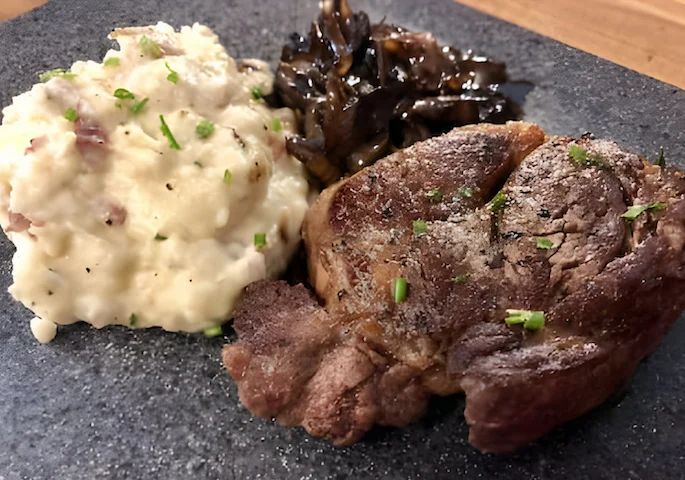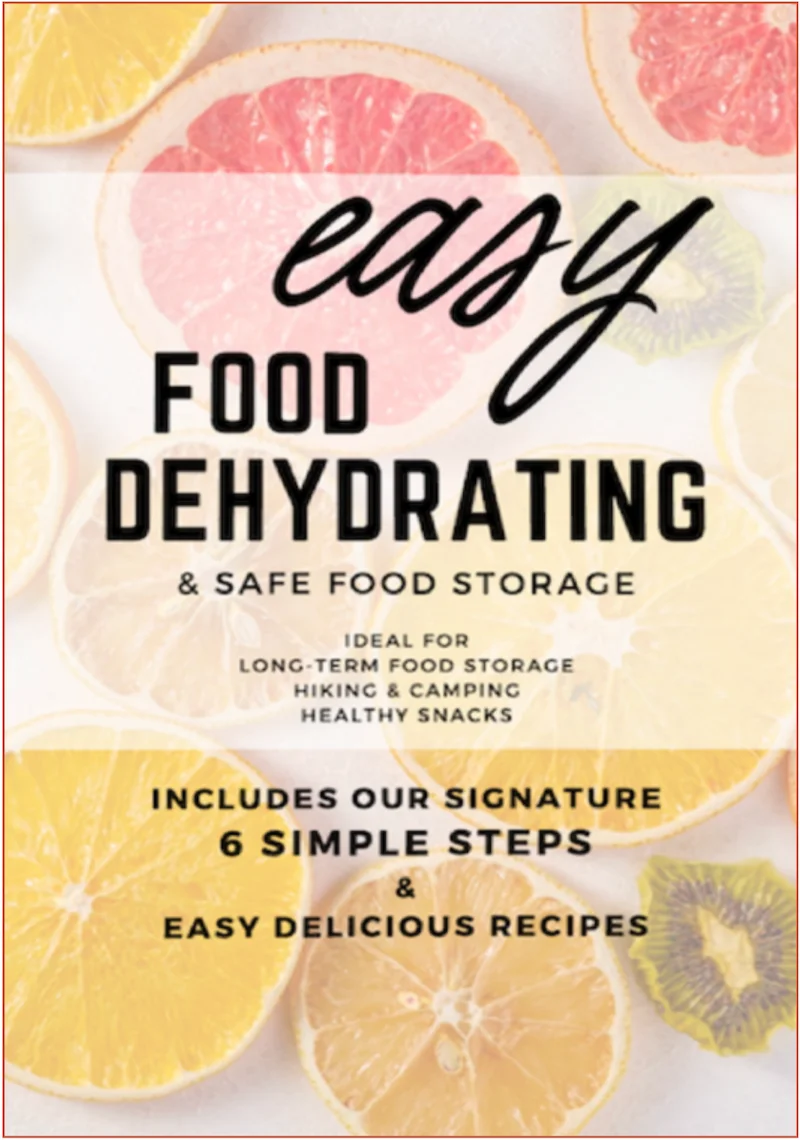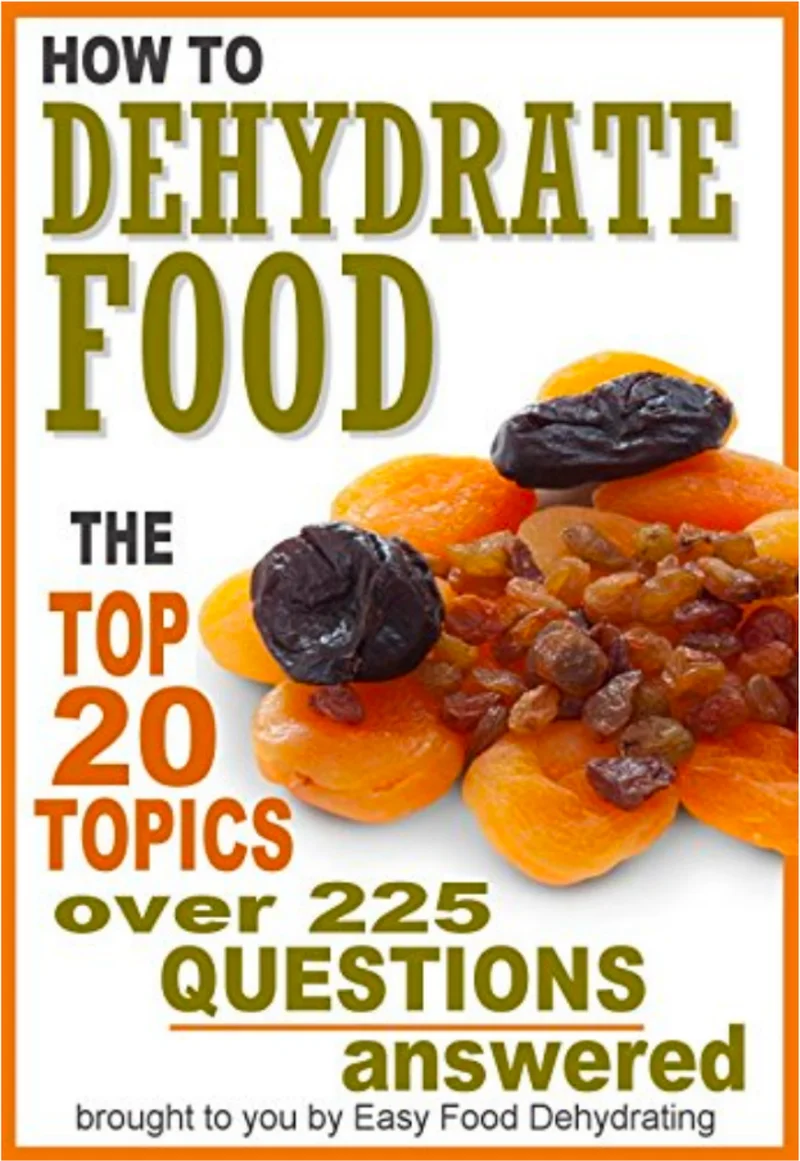What We Mean by “Dehydrate”
Here at Easy Food Dehydrating, “dehydrate” always means using an electric food dehydrator — the easy, reliable way to dry food at home.
- Home
- Dehydrating Vegetables: Step-by-Step Guides by Type
- How to Dehydrate Mushrooms: 2-Step Process to Avoid Case Hardening
How to Dehydrate Mushrooms at Home
and Avoid Case Hardening

Learning how to dehydrate mushrooms at home is easier than you think—but there’s a catch. Mushrooms are delicate, and if you rush the drying process, you’ll end up with tough outsides and damp centers (a problem called case hardening). Done right, though, you’ll lock in flavor and nutrition while creating pantry-friendly mushrooms that last for months.
✅ Quick Answer: How do you dehydrate mushrooms at home?
To dehydrate mushrooms, slice them about ⅜-inch thick, wipe clean with a damp cloth (do NOT wash, they'll get too wet), and dry at 90–95°F for 2–3 hours before raising the temperature to 125°F for 6–10 hours. Mushrooms are done when leathery, not spongy. Always condition for 24 hours before storage.
Whether you’re preserving store-bought button mushrooms or your own wild finds, the method below will help you dry them safely, evenly, and without spoilage.
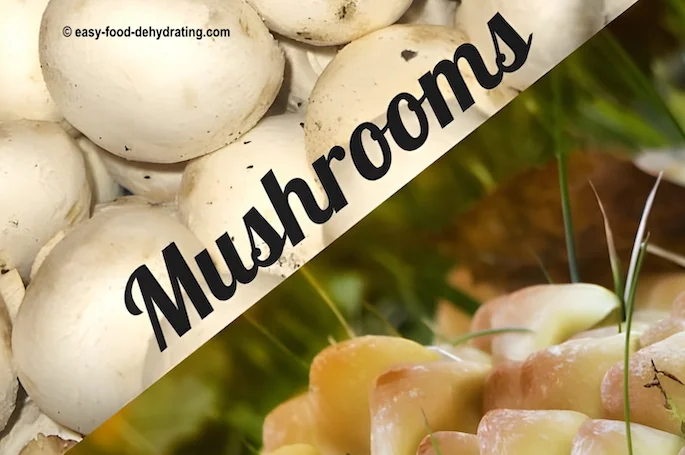
Mushroom Nutrition: Why They’re Worth Drying
VITAMINS: Vitamin D, Vitamin C, Choline, Folate, Betaine, and Niacin, followed by trace amounts of Pantothenic Acid, Riboflavin, Thiamine, and vitamin B6.
MINERALS: Potassium and Phosphorus, followed by Magnesium and Calcium, and also contain trace amounts of Iron, Zinc, Copper, and Selenium.
Mushrooms also contain Omega-6 fatty acids.
Foragers Alert: Safety Steps Before Drying Wild Mushrooms
Before you dehydrate the wild mushrooms you picked on your hike, check out this article on Mushroom Identification.
Their website covers many different kinds of mushrooms; so learn how to identify them! Make sure they're NOT poisonous!
I dehydrate mushrooms using
two different
temperature settings.
Please see #3 in the instructions,
coming up..
I dehydrate mushrooms using two different
temperature settings.
Please see #3 in the instructions, coming up..
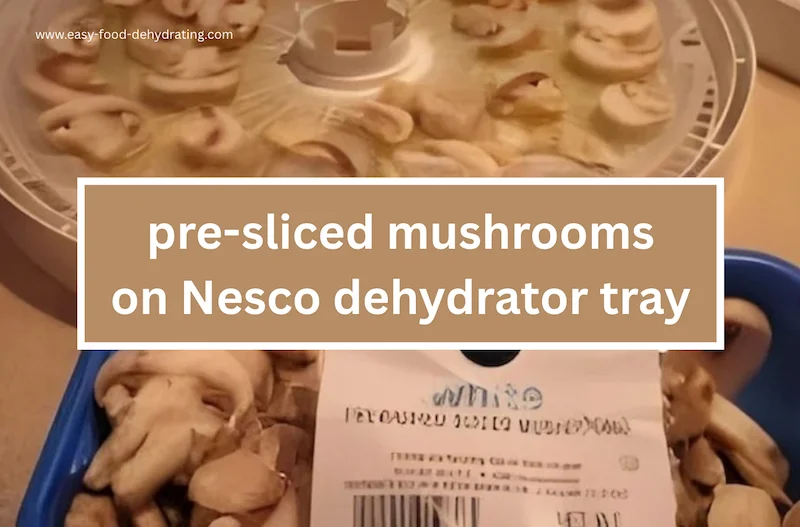
Step-by-Step Guide: Dehydrate Mushrooms Without Ruining Them
Special Care is Needed when Dehydrating Mushrooms...
Let's get going... it's time to learn how to dehydrate mushrooms!
Cleaning and Slicing Mushrooms the Right Way
- Buy them pre-sliced for convenience. If you're using whole ones, gently wipe them with a clean damp cloth first to clean them. That's all you need to do. If whole, slice from the cap top down through the stem, into 3/8" slices.
- Arrange your slices on your food dehydrator trays, making sure the slices don't overlap.
- SPECIAL NOTE: Turn on your food dehydrator at 90°F for Excalibur dehydrators, and 95°F for Nesco dehydrators—for two to three hours THEN set the temperature to 125°F and dry for the remaining time.
💡 Tip: Outside the U.S.? Most dehydrating temps here are listed in Fahrenheit - use our quick converter to see the Celsius equivalent for your machine.
PLEASE pay attention to STEP #3 above.
Heed the two different temperature settings... Use 90°F to 95°F for the FIRST drying session, then raise the temperature to 125°F to finish the drying process.
Drying at the lower temperature first ensures you don't dry out the mushrooms too fast - which causes case hardening:
"Case Hardening" Per Google:
If the food is
dried at a temperature that is too high, the outer surface will harden,
preventing moisture from escaping from the center of the slice—this is called case hardening.
- Mushrooms will be leathery when fully dried.
- Drying time: 3 hours at low temperature, then up to 10 hours at higher temperature.
- Please remember to rotate your trays for even drying.
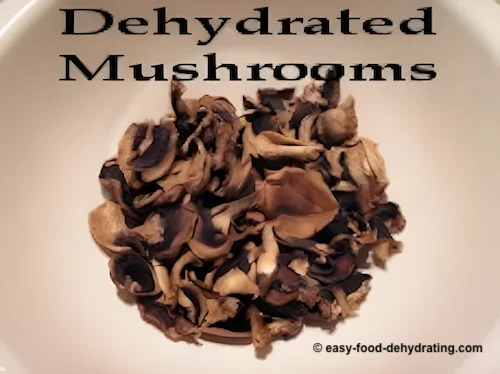
Mushrooms Still Damp? Here’s How to Fix It Fast
Don't be fooled by the first drying. After conditioning (having dehydrated foods sit around for a day in Ziploc bags on your kitchen counter—this helps disperse any remaining dampness evenly), they may still be too damp for vacuuming packing.
Don't be afraid to really dry them out by giving them another go-around in the dehydrator—it's what I usually end up having to do.
Test for excess moisture by squeezing the slices.
After drying, let your mushrooms sit in a loosely closed Ziploc bag for 24 hours at room temp. This helps redistribute any remaining moisture evenly.
If any slices feel soft or spongy after that? Pop them back in the dehydrator for another hour or two.
What's Cookin'?
Bonus Recipe: Filet Mignon with Drunken Mushrooms
Where's the beef? It's right here—in this wonderful Filet Mignon recipe shared by Jen Reviews.
Prep time is only 30 mins, with a cooking time of 45 minutes.
For red meat lovers, I'd say it's well worth the time and effort to impress your better half - hey, and yourself too! Their recipe includes full-color step-by-step instructions.
Thinking of Growing Mushrooms? Here’s What to Know
Mushrooms are a type of fungi that come in many different shapes, sizes, and colors. They can be found all over the world, growing in both natural and man-made habitats.
They are typically grown in dark, humid environments. This is because they need darkness to grow, and humidity helps them stay hydrated.
If you’re thinking about growing mushrooms, here are a few tips to keep in mind:
- Mushrooms need a substrate to grow on. This can be anything from wood chips to straw.
- Mushrooms also need darkness and high humidity to grow properly. A good way to create this environment is by using a plastic bag or terrarium.
- Mushrooms typically take about 2-4 weeks to grow from spores to full-sized mushrooms.
- Harvest your mushrooms when they are big enough to eat. This is typically when the caps are fully open.
If you’re looking for a crop that is relatively easy to grow and can be used in many different recipes, mushrooms are a great option.
A Childhood Mushroom-Shed Memory
As a kid growing up in the UK, I recall a neighboring farmer who had a couple of mushroom sheds. What was interesting (to me) was the roof's apex wasn't closed off. There was about a six-inch gap. I think it was for ventilation purposes.
The gap also let in light, but as you know, mushrooms like darkness and high humidity—which was just as well—because in northern England it rains... a lot... and I'm sure gallons of rain made its way into the mushroom shed through the roof 'gap.'
Jeez, it's funny the stuff you remember, huh? (I'm going back 45 years here!)
Your Top Mushroom Dehydrating Questions, Answered
How long does it really take to dehydrate mushrooms?
How long does it really take to dehydrate mushrooms?
Typically 8–12 hours total. Start at 90–95°F for 2–3 hours, then finish at 125°F for 6–10 hours depending on thickness and humidity.
Why use two different temperature settings?
Why use two different temperature settings?
A low first stage prevents case hardening (tough outsides with damp centers). Raising the temp later finishes the drying safely.
Can I store mushrooms right after drying?
Can I store mushrooms right after drying?
Only if they pass the squeeze test after conditioning. If they still feel bendy, give them another round in the dehydrator.
What’s the best way to rehydrate dried mushrooms?
What’s the best way to rehydrate dried mushrooms?
Soak in warm water for 20–30 minutes, then use both the mushrooms and the soaking liquid in your recipe.
Do dehydrated mushrooms lose nutrition?
Do dehydrated mushrooms lose nutrition?
They retain most minerals and fiber. Vitamin C and some B vitamins are heat-sensitive, but the flavor and usefulness are preserved.
Thanks for spending time with me today learning how to dehydrate mushrooms. With just a little care and the right temperature settings, you’ll have mushrooms that are perfect for soups, sauces, risottos, and even powdered seasoning.
And if you’d like more inspiration, don’t miss my free 5 Dried Food Recipes You'll Actually Love PDF below—featuring carrot soup, minestrone, split pea soup, spicy beef jerky, and even banana cinnamon rolls.
Get 5 Dried Food Recipes You'll Actually Love
Here's where you can get your copy of our all new
5 Dried Food Recipes (That Actually Taste Great)
They're my all-time favorite easy dried food meals!
Get it here right now.
For Free!
Before You Go...
If you enjoyed this page, tap the ❤️ in the lower right-hand corner.
It saves this page to your Grow bookmarks so you can find it again later.
You’ll also see quick share buttons to copy the link, post to Facebook,
or save it straight to Pinterest.
